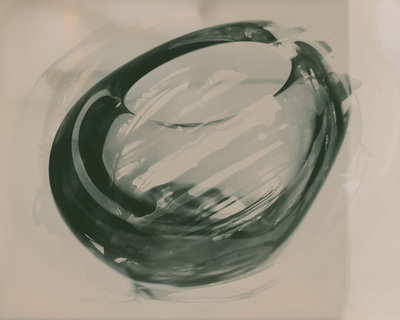Idlographs
I’d like to introduce a new process, one that I came up with on my own: the idlograph. I’m sure that I’m not the first to do it, but I haven’t seen any examples before now, so let’s just call it an independent discovery rather than an invention.
Here are a couple examples:

Small Bowl

Bill
The idea is to have an expressive image that interacts with the materials used to make it. These are just some early examples — I’m sure each person working with the process will follow their own path.
Briefly, an idlograph is a print made using a darkroom process of “Interruped (or Incomplete) Development and Lumen”.
In a standard darkroom, using standard chemicals, I apply developer to an enlarged black-and-white print until it looks “done.” This is the interrupted part. Then I rinse the developer off and take the print out into the light. The paper will change color. This is the lumen part. Once I’m happy with the change in the paper, I take it back into the darkroom and fix it. Depending on the paper, this will cause another color shift, but the image will be more-or-less permanent. Finish the print as usual after this point.
I think that there are tons of interesting images that can be made with this process, and I’m sure that paper choice, time, chemistry, etc., all play a part. I’m really enjoying exploring it — I hope others will too.